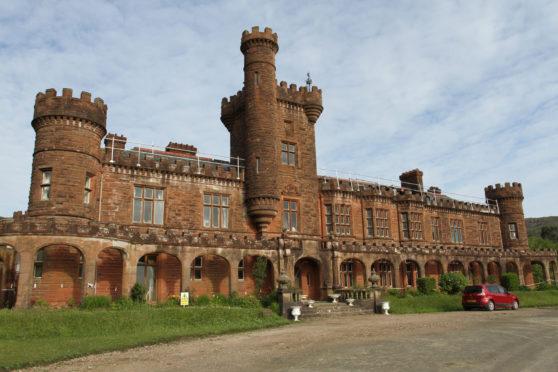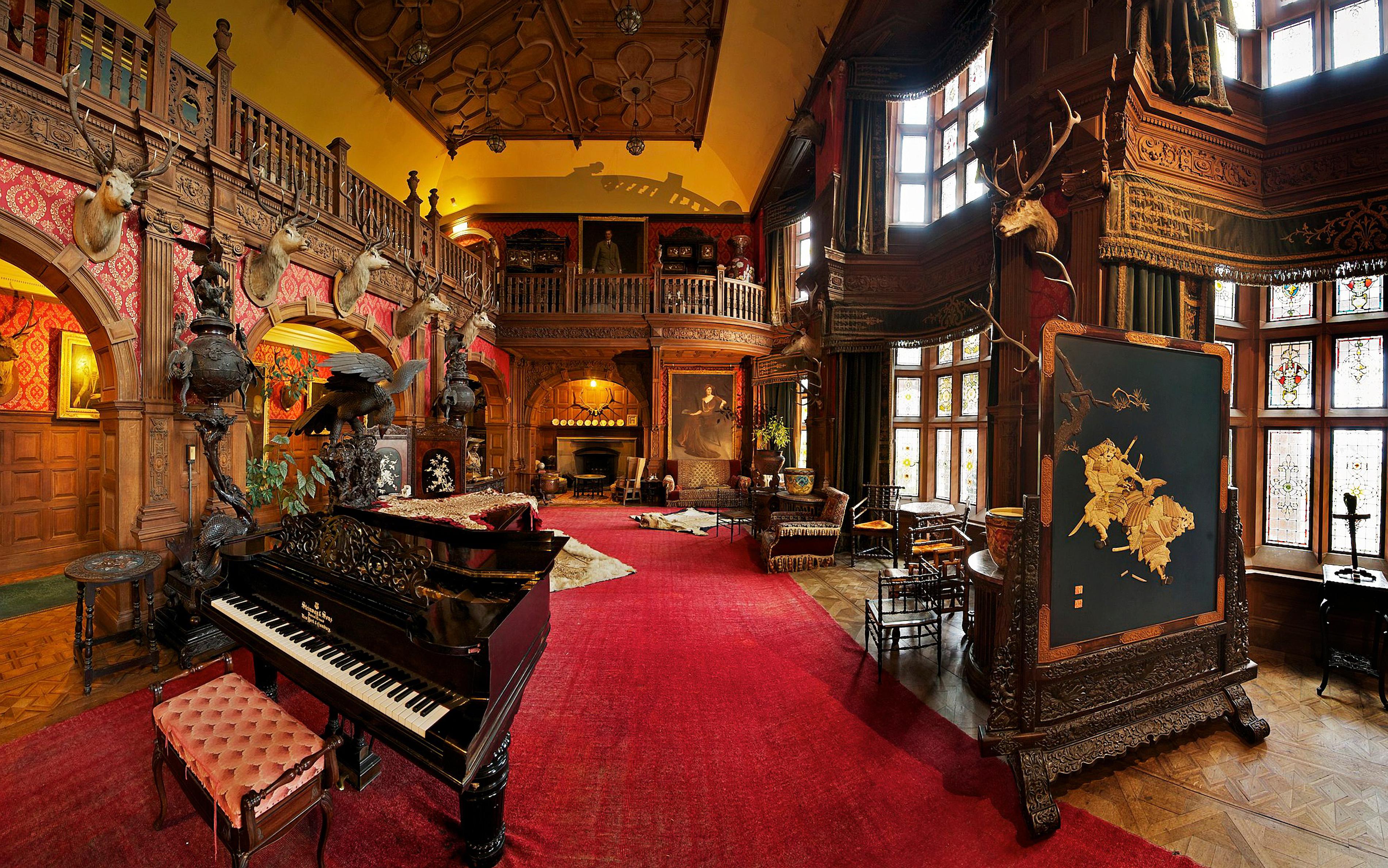
Once Kinloch Castle was the scene of riotous house parties, the playboy mansion of the isles.
Now Scottish Natural Heritage (SNH) faces a crunch meeting to decide the fate of Victorian textile heir George Bullough’s extravagant bachelor pad.
The turreted country house on Rum – which would have cost over £20.5 million at today’s prices – lies derelict.
Conservation group Kinloch Castle Friends Association, who want to save the Gothic pile for posterity, has asked the government wildlife quango to hand it over to the public.
The group, with supporters from across the world, have submitted an ambitious £6.9m plan, using both private and public money, to restore the sprawling sporting lodge to its former glory.
After a near six-month wait, SNH’s board will decide on whether the bid to save the historic home has been successful next month. But yesterday Catherine Duckworth, the association’s secretary, warned that any delay in the decision would deliver a death blow.
She said: “The castle is deteriorating day by day.
“We have said if the asset transfer is deferred any longer then we are pulling out, because it becomes no longer viable.
“And really then SNH are left with the property, and the question of what does happen with the castle. We are the saviours of last resort. That is our feeling – unless somebody does come forward who is prepared to put a lot of money into it, and do something major. And nobody has come forward so far.”
Kinloch Castle was built between 1897 and 1900 by George Bullough, later knighted, who commissioned it aged just 21, at the cost of £250,000.
The Old Etonian, who had inherited the remote 26,000 acre Hebridean island on the death of his father, pursued a life of “purposeful idleness”. He and his guests used it as a base for hunting, shooting and fishing on the island, which now has a population of 30 people.
After his marriage to Lady Monica, who claimed to be a descendant of Napoleon, the castle was the scene of lavish parties attended by politicians, businessmen, Gaiety girls, theatrical stars and the nouveau riche.
Guests of the Laird of Rum slept in four poster beds, and were waited on hand and foot by the staff, who could be summoned by one of the first private telephone systems in Scotland. It was so lavish it was known as the Belgravia in the Hebrides.
If the weather was inclement, the guests could entertain themselves in the billiard rooms, or listening to the rare orchestrion – an automated electronic organ, which is still in place.
But the estate became neglected – earning it the nickname the “forbidden island” – and in March 1957 Lady Monica Bullough sold Rum to the Nature Conservancy Council for £23,000 “to be used as a nature reserve in perpetuity and Kinloch Castle maintained as far as may be practical”.
The castle, whose plight has been championed by Prince Charles’s Prince’s Regeneration, has since been used as a hotel, and hostel, before falling into disrepair.
Mrs Duckworth said: “We want to do a lot of repair work and upgrading on the former hostel accommodation, and to reopen that part, to start bringing in money as soon as possible, before we start tackling the rest of the building.
“We will be doing the whole roof. The castle needs rewiring completely. It is still the original wiring, and lead piping for the water supply. Even the boiler is still original. It is quite an enormous task.”
The association, whose members come from across the world, including America, Canada, Australia and Europe, have put forward a business plan to reopen the hostel, with accommodation for 50 within, 18 months.
They hope it should be in profit within a further two years, she said. The money would be ploughed back into restoration.
Yesterday, SNH said: “We are currently assessing the asset transfer request. We expect to communicate our decision on November 8.”

Enjoy the convenience of having The Sunday Post delivered as a digital ePaper straight to your smartphone, tablet or computer.
Subscribe for only £5.49 a month and enjoy all the benefits of the printed paper as a digital replica.
Subscribe